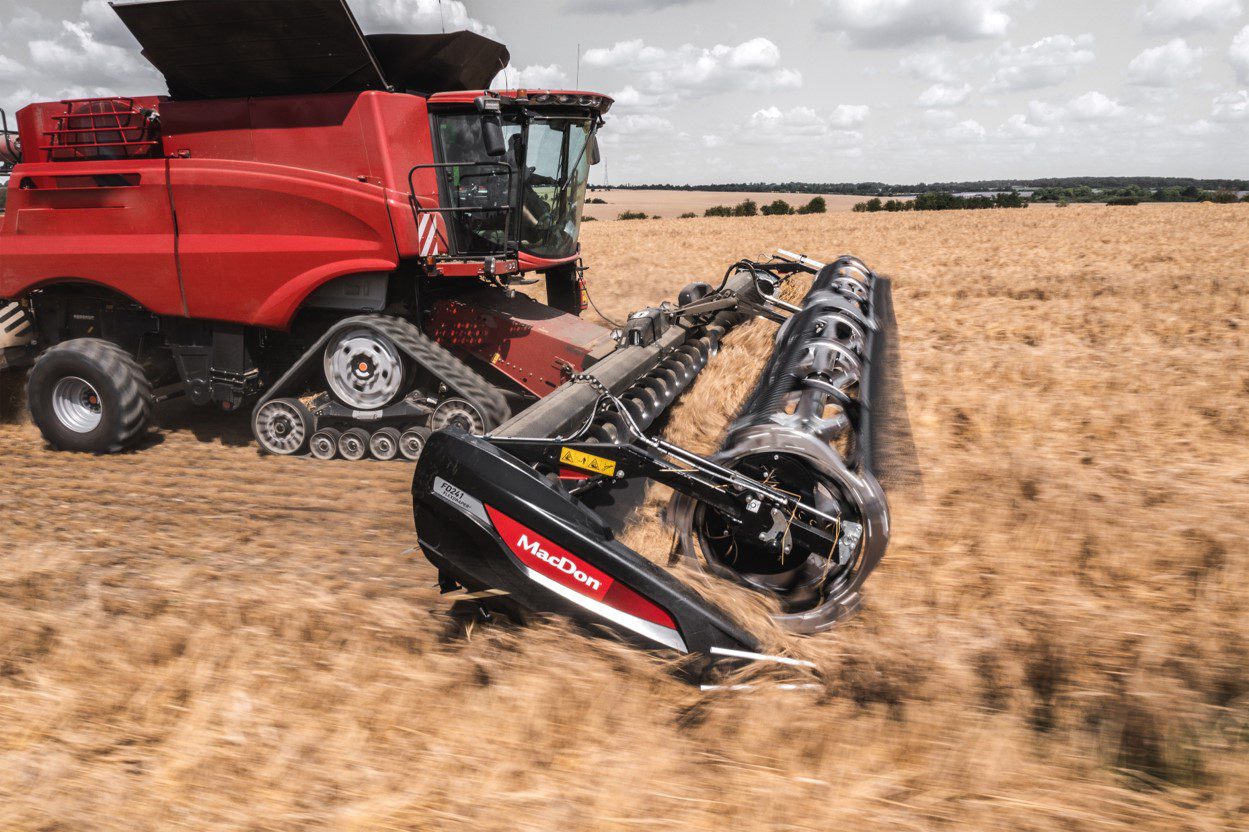
As the R&D Engineering Manager at MacDon Industries, Ryan Georgison is the perfect choice to lead the company’s CAAIN-supported project, Harvesting Automation: Reducing the Requirement for Highly Skilled Labour During the Harvest of Broad-Acre Cash Crops. Having grown up on the family dairy farm near Winnipeg, and having studied engineering at Harper Adams University in the UK, he’s also personally and professionally suited to work for one of Canada’s oldest farm equipment manufacturers. In fact, he calls his job the best of both worlds, since it allows him to indulge in two of his passions—mechanical design and agriculture. “One of the things that sets us apart is the time we spend consulting our customers during the design process. I often take prototypes out to the field and engage with farmers to find out what works and what doesn’t. Because I grew up in a dairy operation, I can speak “producer” and bridge the worlds of ag and engineering.”
This approach of getting information straight from the source is also one of the strengths of the company’s project, which, as its title indicates, focuses on reducing manual labour requirements. Specifically, MacDon’s engineers and technologists are working to automate the crop‑engagement portion of a combine, or header as it’s called, and the user interface inside the cabin. Because this product is primarily an aftermarket addition, and since harvesters vary from manufacturer to manufacturer, one of the big challenges is designing a solution that can be installed on any brand of new combine or retrofitted on an older model. Ryan explains. “We devote a lot of time and effort to studying different types of equipment to ensure our technology integrates seamlessly with as many OEM machines as possible. We’re trying to reduce the effort of operators as they spend long days and nights harvesting.”
When asked what CAAIN support has meant to the project, Ryan pauses, thinks for a moment, then responds. “Our traditional strengths have been in the areas of mechanical design and hydraulics. To succeed with this project, we’ve had to add competencies in automation, sensor technology, machine learning, and AI. Without CAAIN’s funding, we wouldn’t have been able to attract the right people, develop the necessary skill sets internally, or develop strategic relationships with other SMEs working in the automation space. And if we lacked access to that expertise our technology would be nowhere near as advanced as it is today.”
Ultimately, the project goal is to design and produce a product that cuts grains, oilseeds, and pulses so precisely, and is so superior to what comes standard on an OEM, that purchasers will not think twice about installing MacDon’s automated equipment on their new combines. And the ROI is not limited to retrofitting the latest models. Consider the savings if, instead of buying a new combine, a farmer can simply upgrade the existing header and user interface on older machinery. That has both environmental and economic implications, meaning that MacDon’s technology can impact a farm’s sustainability as well as its financial viability. “I like to say that we leave no crop behind,” summarizes Ryan with a laugh. “The crop is where the money is, so it shouldn’t still be in the field after the combine harvester— no matter how old it is—has passed.”
CAAIN Contribution
$3,839,381
Total Project Value
$9,351,260
Project Contact
Ryan Georgison
Research & Development Engineering Manager
MacDon Industries
rgeorgison@macdon.com
Project Video